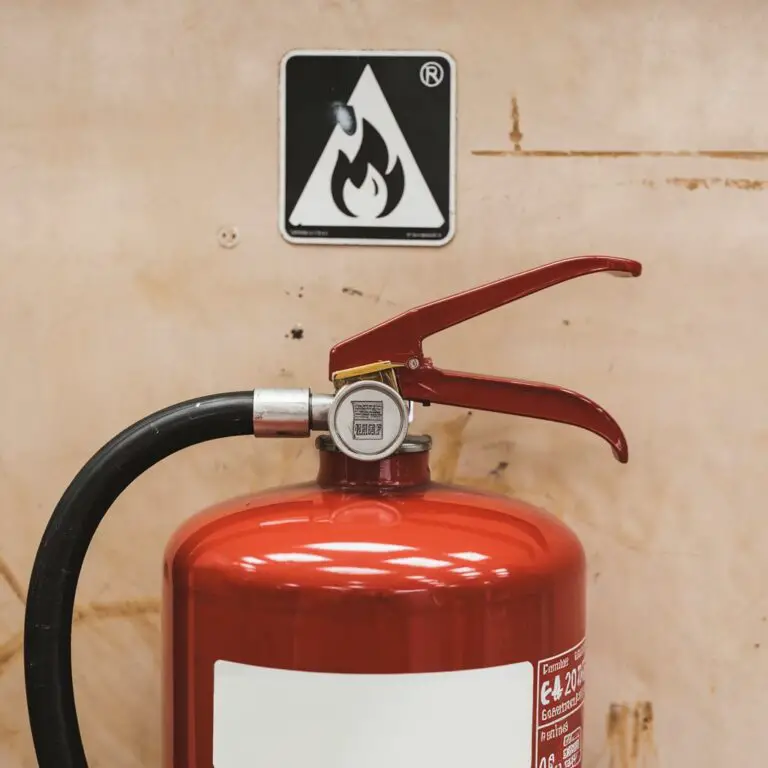A fire extinguisher is a crucial safety device designed to put out small fires before they escalate into larger, uncontrollable blazes. Understanding the types of fire extinguishers, their proper usage, and maintenance is essential for both home and workplace safety. This guide aims to provide you with comprehensive information about fire extinguishers, ensuring you are well-prepared in case of a fire emergency.
1. What is a Fire Extinguisher?
A fire extinguisher is a portable device that dispenses agents to extinguish fires. It is designed to be used by anyone trained in its operation, making it a vital piece of equipment in homes, offices, and public buildings. Fire extinguishers come in various sizes and types, each suited for specific kinds of fires. Understanding what a fire extinguisher is and how it works is crucial for effective fire safety.
2. Types of Fire Extinguishers
Fire extinguishers are classified based on the types of fires they can extinguish. Here are the main categories:
A. Water Fire Extinguishers (Class A)
Water extinguishers are effective for extinguishing fires involving solid materials such as wood, paper, and textiles. They work by cooling the burning material and removing heat from the fire.
B. Foam Fire Extinguishers (Class A and B)
Foam extinguishers are used on both solid fires and flammable liquid fires. They form a blanket over the fire, preventing oxygen from fueling the flames.
C. Dry Powder Fire Extinguishers (Class A, B, and C)
Dry powder extinguishers are versatile and can be used for various fires, including those involving flammable gases. They interrupt the chemical reaction of the fire.
D. Carbon Dioxide (CO2) Fire Extinguishers (Class B and Electrical)
CO2 extinguishers are suitable for flammable liquid and electrical fires. They work by displacing oxygen and smothering the fire.
E. Wet Chemical Fire Extinguishers (Class F)
These extinguishers are specifically designed for kitchen fires involving cooking oils and fats. They work by cooling the flames and creating a barrier between the fuel and oxygen.
3. How to Use a Fire Extinguisher
Using a fire extinguisher correctly can save lives. Follow these steps, remembered by the acronym PASS:
- Pull the pin at the top of the extinguisher.
- Aim the nozzle at the base of the fire.
- Squeeze the handle to release the extinguishing agent.
- Sweep the nozzle from side to side until the fire is out.
Always ensure you have an escape route and never put yourself at risk when using a fire extinguisher.
4. Choosing the Right Fire Extinguisher
Selecting the appropriate fire extinguisher depends on the potential fire hazards in your environment. Consider the following:
- Identify the types of materials present that could catch fire.
- Ensure the extinguisher is easily accessible and visible.
- Check the capacity and size according to the area you want to protect.
- Comply with local fire safety regulations and recommendations.
5. Maintenance and Inspection
Regular maintenance ensures fire extinguishers are functional when needed. Here are key maintenance tips:
- Inspect your fire extinguishers monthly to check for pressure and physical damage.
- Keep extinguishers clean and accessible, ensuring no obstructions are present.
- Schedule professional inspections annually to ensure compliance with safety standards.
6. Common Misconceptions about Fire Extinguishers
There are many misconceptions surrounding fire extinguishers, such as:
- All extinguishers are the same: Different extinguishers are designed for specific types of fires.
- Once used, they cannot be recharged: Most extinguishers can be recharged after use.
7. FAQ
What is the lifespan of a fire extinguisher?
The lifespan of a fire extinguisher typically ranges from 5 to 15 years, depending on the type and manufacturer. Regular inspections can help determine its viability.
How do I know which fire extinguisher to use?
Select a fire extinguisher based on the types of fire hazards present. For instance, use a Class A extinguisher for ordinary combustibles and a Class B extinguisher for flammable liquids.
Can I use water on a grease fire?
No, using water on a grease fire can cause the fire to spread. Use a Class K fire extinguisher or cover the fire with a lid to smother the flames.
How often should I inspect my fire extinguisher?
Inspect your fire extinguishers monthly. Additionally, have a professional inspection completed at least once a year to ensure functionality.
What should I do if my fire extinguisher is empty?
If your fire extinguisher is empty, replace or recharge it immediately to ensure you are prepared for any fire emergencies.

